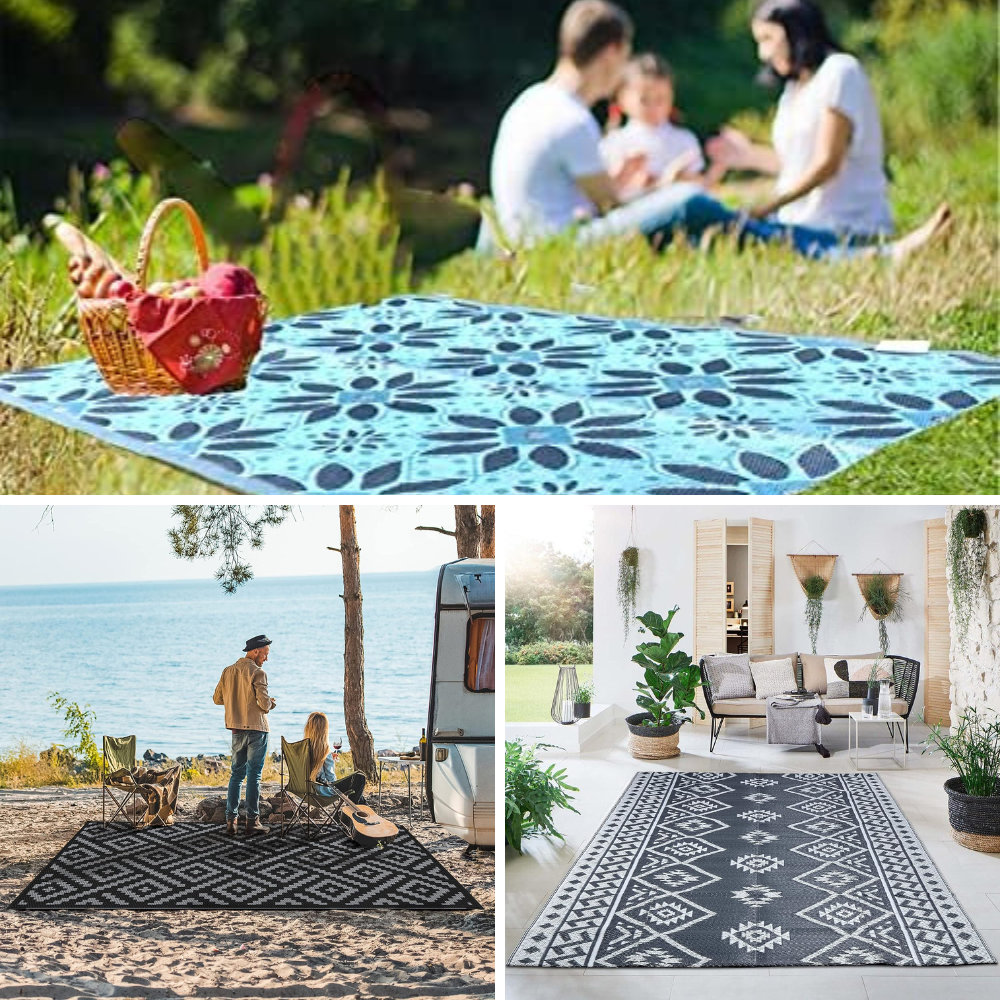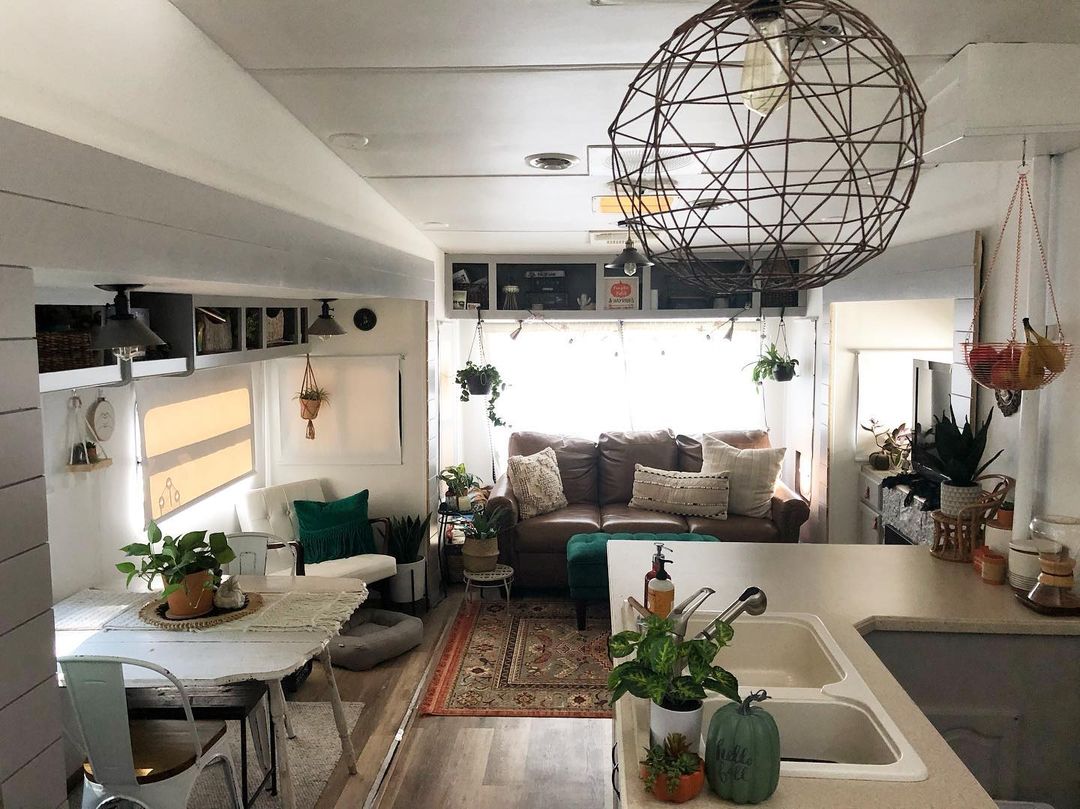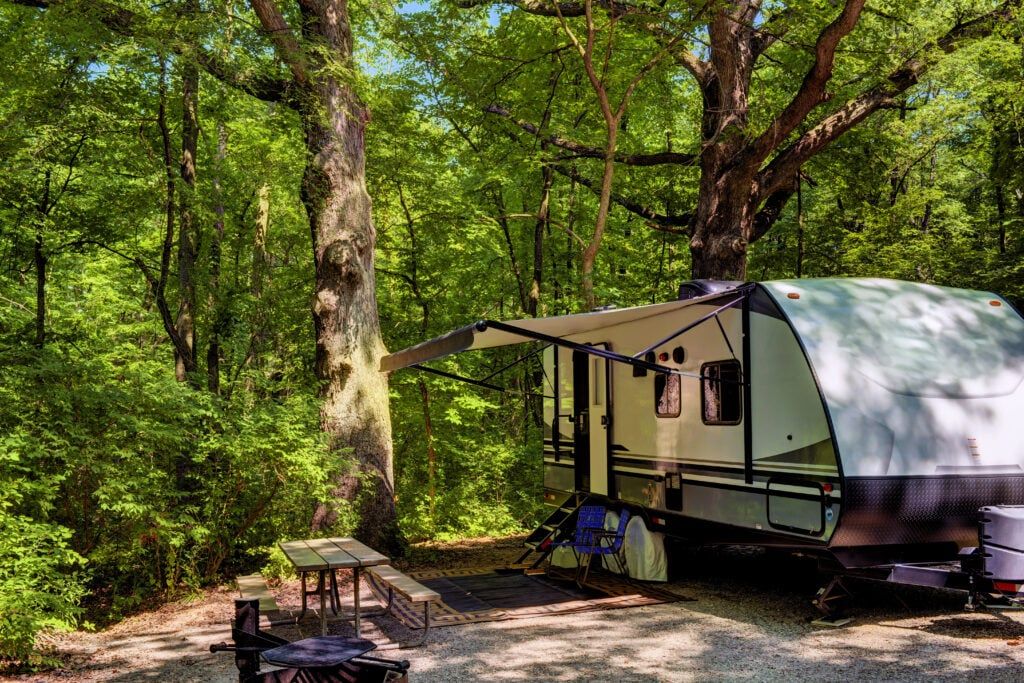When it comes to enjoying the great outdoors in your RV, keeping your outdoor living space clean and comfortable is a top priority. One essential component of any RV outdoor living area is a good quality outdoor rug. Not only does it add a touch of homey décor, but it also helps to keep dirt and debris from finding its way inside your RV. However, with so many different materials and styles to choose from, it can be challenging to find the perfect rug for your RV. In this blog post, we will explore the different materials used in RV outdoor rugs, and the benefits and drawbacks of each, so you can make an informed decision when choosing your next outdoor rug.
Polypropylene:
One of the most popular materials used in RV outdoor rugs is polypropylene. It is a synthetic material that is lightweight, durable, and resistant to water, mildew, and stains. Polypropylene is also UV resistant, so it won't fade in the sun, making it an excellent choice for outdoor use. These rugs are easy to clean and typically come in a variety of sizes and colors. The downside of polypropylene rugs is that they can be more expensive than other materials, but they are worth the investment in the long run.
Polyester:
Another commonly used material for outdoor rugs is polyester. It is also a synthetic material that is resistant to water and stains. Polyester rugs are softer and more comfortable than polypropylene rugs, making them ideal for barefoot walking. They are also easy to clean and come in a variety of colors and patterns. The downside to using polyester rugs is that they may not last as long as other materials, especially if exposed to direct sunlight.
Natural Fibers:
If you are looking for a natural and eco-friendly option, then natural fiber outdoor rugs are the way to go. These rugs are made from materials such as jute, bamboo, and seagrass. They are biodegradable, renewable, and non-toxic, making them an excellent choice for environmentally conscious RV owners. Natural fiber rugs are also durable, and moisture-resistant, and provide a unique and natural look to your outdoor living space. The downside is that these rugs are not as stain-resistant as synthetic materials and can be harder to clean.
Rubber:
Rubber outdoor rugs are a great option for RVers who want a no-slip rug. They are durable, slip-resistant, and easy to clean. Rubber rugs are also mildew and stain-resistant and come in a variety of colors and patterns. On the downside, rubber mats are not as comfortable to walk on as other materials, and they can be heavier than other options.
Foam:
Foam outdoor rugs are lightweight, easy to clean, and are comfortable to walk on. They are a great option for RVers who want a soft and plush rug but are not looking for something that will last for years. Foam rugs come in a variety of colors and patterns and are a budget-friendly option. The downside of foam is that they are not as durable as other materials and may not hold up well in extreme weather conditions.


What types of materials are best for an RV outdoor rug?
The best materials for an RV outdoor rug are those that are durable, waterproof, and easy to clean. Synthetic materials such as polypropylene, polyester, and nylon are all good choices. These materials are lightweight, durable, and can withstand the elements. They are also easy to clean and maintain. Natural fibers such as jute, sisal, and seagrass are also good options, as they are naturally water-resistant and can add a touch of style to your RV.
How do I know which material will be more durable?
The best way to determine the durability of a material is to look at its properties. Different materials have different properties that make them more or less durable. For example, some materials are more resistant to wear and tear, while others are more resistant to heat or cold. Additionally, some materials are more resistant to corrosion or water damage. It's important to consider the environment in which the material will be used when making a decision about its durability.
What factors should I consider when selecting an RV outdoor rug?
When selecting an RV outdoor rug, you should consider the size, material, and color of the rug. The size should be appropriate for the area you plan to use it in, and the material should be durable and weather-resistant. Additionally, the color should complement the existing decor of your RV. You should also consider the thickness of the rug, as this will affect how comfortable it is to walk on. Finally, you should consider the price of the rug and make sure it fits within your budget.
What are the pros and cons of different materials?
The pros and cons of different materials depend on the application. For example, wood is a great material for furniture because it is strong and durable, but it is not suitable for outdoor use because it is susceptible to water damage. Metal is strong and durable, but it can be difficult to work with and can be expensive. Plastic is lightweight and easy to work with, but it is not as strong or durable as other materials. Ultimately, the best material for a given application will depend on the specific needs and requirements of the project.
What kind of maintenance is required for different materials?
The maintenance requirements for different materials depend on the type of material and the environment in which it is used. Generally, materials that are exposed to the elements require more frequent maintenance than those that are not. For example, wood may need to be treated with a sealant or paint to protect it from moisture and UV rays, while metal may need to be cleaned and polished regularly to prevent rust. Additionally, materials that are used in high-traffic areas may need to be replaced more often than those that are used in low-traffic areas.

In conclusion, finding the best material for your RV outdoor rug depends on your preferences and the environment where you will be using your rug. Each material has its own set of benefits and drawbacks, so it is essential to know what you are looking for before making a purchase. Polypropylene, polyester, natural fibers, rubber, and foam are all excellent options, and it is up to you to choose the one that works best for your RV lifestyle. With the right outdoor rug, you can add comfort, style, and functionality to your outdoor living space, making your RV experience all the more enjoyable.












